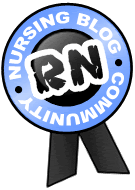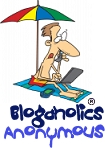I got this e-mail from my mom and I thought that I'd share it with everyone. Uhm, this information I think came from MSN pages.
.:The Problem: Dry Cabin Air:.
The low humidity in airplane cabins tends to dry out the sensitive mucus membranes in the upper airways where viruses and bacteria can take hold.
What To Do:
* Keep drinking. Ideally, have 8 ounces of water or fruit juice for each hour of your trip.
* Stick to bottled or canned water and juices, and limit alcohol or caffeinated drinks, which can be dehydrating.
* Consider skipping drinks that may be made from airline tap water, such as coffee or tea. Also, ask for your drinks without ice when traveling from countries where water safety is questionable.
.:The Problem: Blood Clots:.
Blood clots (deep venous thrombosis, or DVT) can develop in the deep veins of the legs, especially on long flights. They can lead to a potentially deadly embolism, sometimes days after the trip. At particular risk: individuals who have had recent orthopedic surgery in their lower limbs, those with vascular or circulatory problems, some cancer patients, the severely obese, smokers, pregnant women and those on hormone replacement medication or contraception pills, and those with a family history of blood clots, says Dr. Phyllis Kozarsky, a consultant to the Centers for Disease Control and Prevention (CDC).
What To Do:
* Stretch and walk around, if you can, every hour or so.
* Do in-seat ankle extensions and flexes, wiggle your toes, move your arms and legs around.
* If possible, get your legs above your heart—easiest if you are in a first-class sleeper, but also possible in a bulkhead economy-class seat, where you can put your feet up on the wall in front of you.
* Avoid sitting with your legs crossed or sleeping for long periods of time.
* Ask your doctor about prescribing medical graduated compression socks if you are at risk for blood clots.
Those who experience the symptoms of DVT—swelling, warmth, redness in the leg, or pain that is noticeable or worse when standing or walking— should notify a flight attendant. (And do not massage the leg, which could be dangerous.)
.:The Problem: Germs in Close Quarters:.
The Federal Aviation Administration reports that 75% of commercial airliners now use air filters that can intercept almost all of the harmful bacteria, viruses and other contaminants in the cabin. Still, that may not be enough to protect you from the germs of the sneezer sitting next to you.
What To Do:
* Bring your own lightweight microfiber travel blanket and pillow cover for long flights, because you can never be sure that supplies onboard are clean. (Airline cleaning schedules vary.)
* Wash, wash, wash your hands after touching potentially germy surfaces—door handles, toilet seats and handles, lavatory sink spigots, magazines or other people’s hands. Also, use clean hands when touching your mouth, eyes, nose or any food. “The most common way of contracting an infection onboard is by contact with an infected surface—not by breathing infected air,” says Jolanda Janczewski, an occupational health and safety consultant.
* If you can’t get to soap and water, use an antibacterial gel cleaner. Choose one that is at least 60% alcohol, recommends Dr. Christie Reed, a travel-health official at the CDC. Small, 2- to 3-ounce samplers that comply with stricter airport carry-on rules for liquids and gels are available at most convenience stores and drugstores.
* Use bottled water—not tap—for brushing your teeth.
.:The Problem: Blocked Ears:.
Traveling at 35,000 feet can cause painful and potentially dangerous changes in ear pressure when the plane is ascending or descending. Passengers traveling with head congestion are particularly susceptible.
What To Do:
* Chew gum, suck on candy and keep swallowing. Says Dr. Reed, “Swallowing helps to equalize pressure. Sips of bottled water also help.”
* Consider depressurizing ear inserts (available in adult and children’s sizes at most drugstores), which also can help to equalize air pressure.
* Have a cold? Ask your doctor if decongestant medication would help. (Check security rules for packing nasal spray.) And don’t hold your nose and blow hard, which can do more harm than good by potentially damaging your eardrum.




























No comments:
Post a Comment